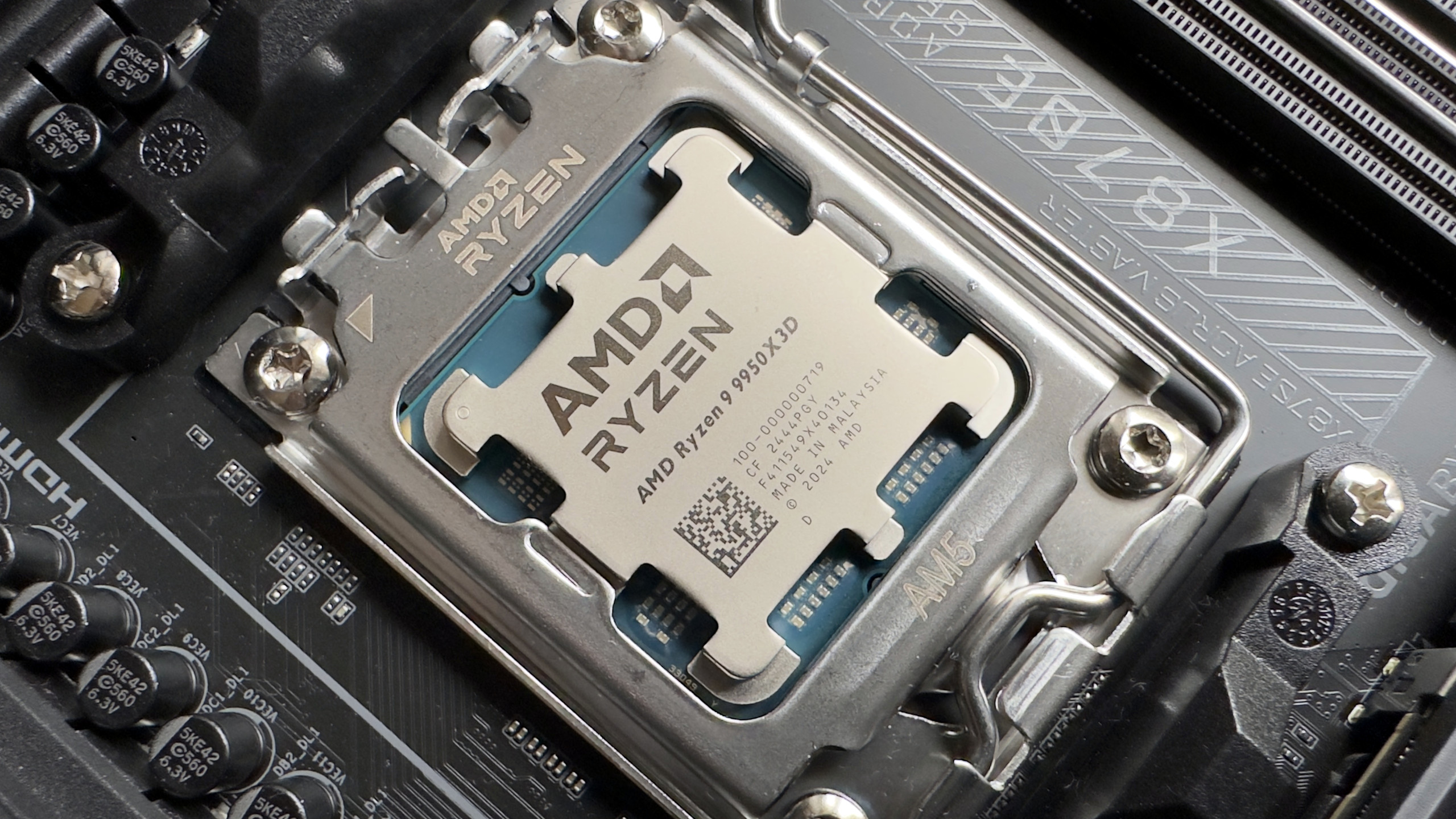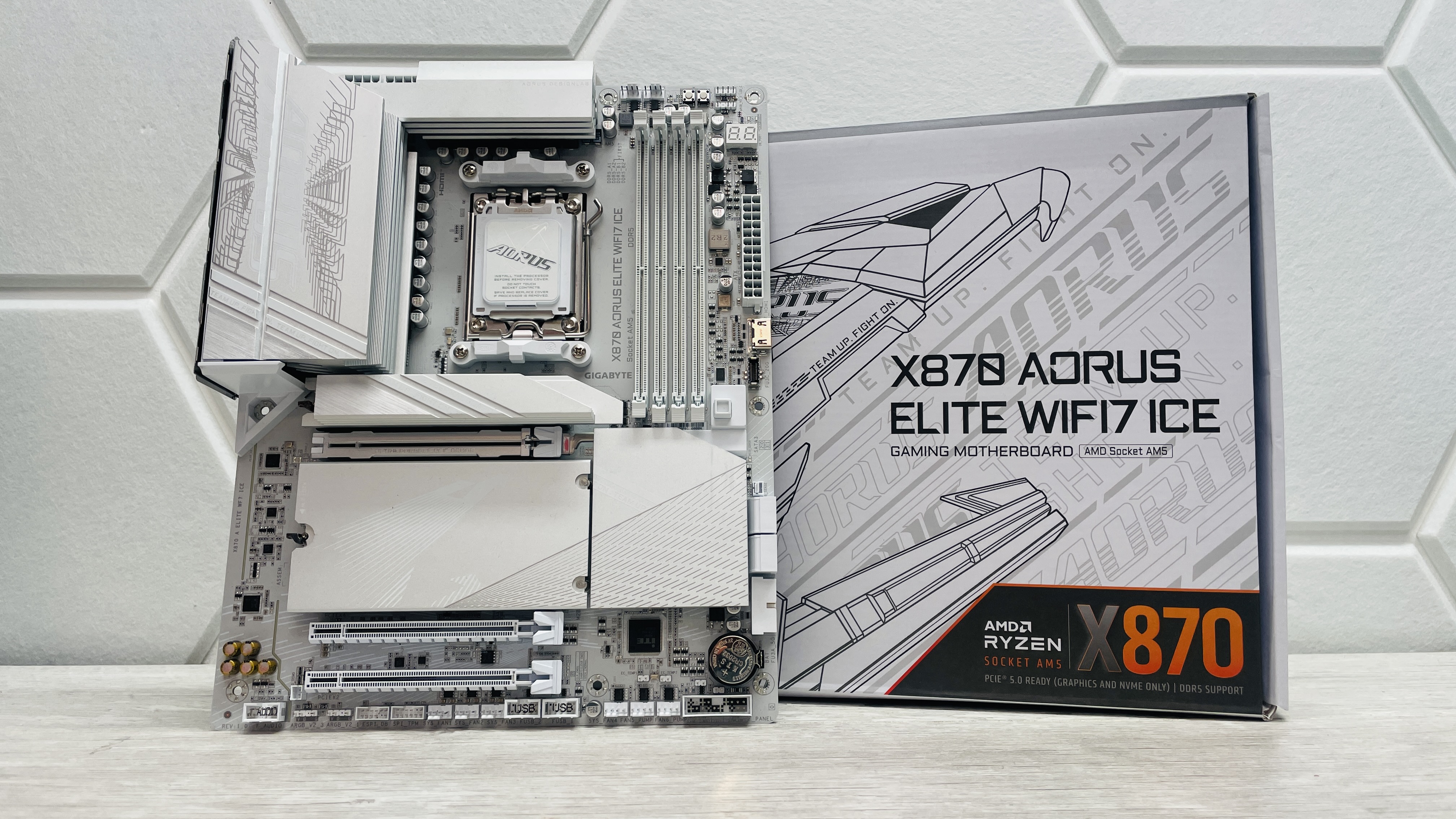
Towards the end of last year, Gigabyte launched a BIOS feature for its AMD AM5 socket motherboards called X3D Turbo Mode. With a single click, the motherboard would reconfigure how a Ryzen X3D CPU was set up, squeezing a little more performance out of it. Well, it's back again with a new version, X3D Turbo Mode 2, and this time, Gigabyte is promising a much larger boost.
At this year's Computex event, Gigabyte unveiled the latest generation of its one-click-booster system alongside a raft of new motherboards, as reported by Wccftech. The first version of X3D Turbo Mode worked in a similar manner to other vendors, such as Asus' Turbo Mode, in that it simply disabled SMT (simultaneous multithreading) and for Ryzen 9 X3D processors, it also disabled the second CCD.
So, if you had a Ryzen 7 7950X3D, activating X3D Turbo Mode would turn it from a 16-core, 32-thread chip into an eight-core, eight-thread one. This would ensure that every thread from a game would be processed by cores with 3D V-cache for maximum performance.
Well, that's the idea, but I found that Asus' version just made things worse.
This time, however, Gigabyte has added a bit more to its X3D Turbo Mode system, and instead of just heavily restricting the number of threads a Ryzen X3D chip can support, it also tweaks the power delivery and clock speeds to eke out more performance.
In a presentation slide for X3D Turbo Mode 2, Gigabyte claims that Cyberpunk 2077 can be made to run 15% faster than normal, three times faster than the first generation of Turbo Mode. It's not clear what CPU, motherboard, RAM, and graphics card were used for such a test, nor what game settings were applied, so how easy it will be to verify its claims is anyone's guess.

I must admit that I feel a fair degree of scepticism over the 15% performance increase claims. While disabling SMT and one CCD will work on any Ryzen X3D, not all of them will overclock to the same degree. You could buy ten Ryzen 9 9950X3D chips, and each one will probably have different clock speed limits.
With Gigabyte claiming a 15% increase with Turbo Mode 2 and 5% with the original Turbo Mode, that suggests the BIOS setting applies a 10% overclock to the Ryzen processor, involving changes to the boost clock, power delivery, and memory timings.

Catch up with Computex 2025: We're stalking the halls of Taiwan's biggest tech show once again to see what Nvidia, AMD, Intel, Asus, Gigabyte, MSI and more have to offer.
It's possible to do all of it yourself, of course, but it involves an awful lot of tweaking, as well as having the right hardware to hand and no small degree of fortune in the silicon lottery. Is Gigabyte achieving all of this via X3D Turbo Mode? It's possible, but as I've already said, I'm sceptical.
Even more so because Gigabyte is also claiming that the second generation of Turbo Mode improves 'multi-core thread' performance by 41% compared to the first gen, which suggests it's no longer disabling SMT (but still shutting off one CCD).
Still, I'm happy to have my doubts shot down with actual test results, so when we get the chance to test out X3D Turbo Mode 2 for ourselves, we'll be sure to let you know how well it actually works.







